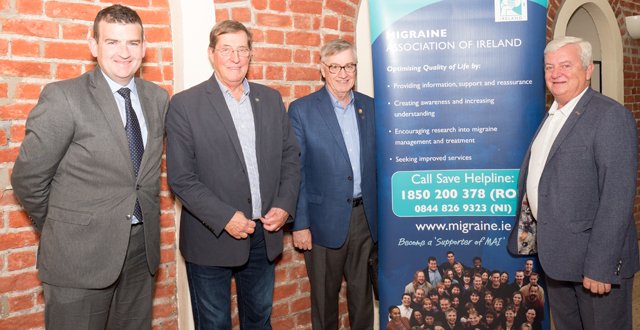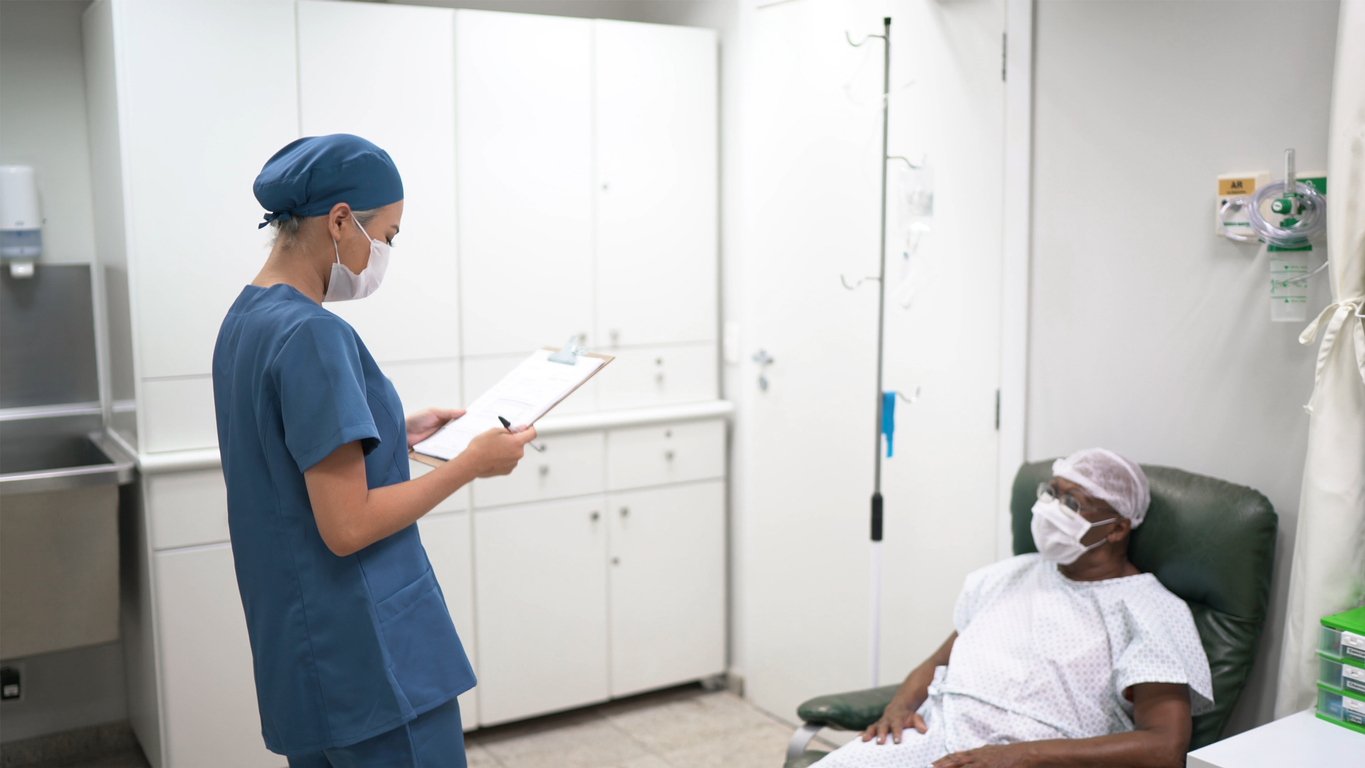The Migraine Association of Ireland hosted a health professional education seminar in Dublin last month, which offered attendees the opportunity to acquaint themselves with current and emerging therapies applied in the management and treatment of migraine and featured presentations from two of the world’s leading migraine and headache experts – Dr Lars Edvinsson and Dr Allan Purdy.
Dr Edvinsson was the main researcher in the discovery and development of the new Calcitonin Gene Related Peptide (CGRP) antibodies and is a Neurologist at the Department of Emergency and Internal Medicine, Skåne University Hospital and Professor of Internal medicine at Lund University in Sweden. He is chairman of the Swedish Migraine Society and the current President of the International Headache Society.
Recently retired Dr Purdy was a Neurologist and Professor in the School of Medicine at Dalhousie University in Nova Scotia, Canada. He is the immediate Past President of the American Headache Society and has also served as President of the Canadian Headache Society and on the Board of Directors of the International Headache Society.
In his opening remarks to the meeting, Mr Patrick Little, CEO of the Association, noted that GPs and medical students receive very little training in migraine and he detailed the work of the Association in helping provide high quality education for clinicians on the topic in order to optimise the management of migraine patients in Ireland.
<h3 class=”subheadMIstyles”>The development of CRGP</h3>
Dr Edvinsson recounted the early steps and milestones in the understanding of the neuropeptide CGRP in the trigeminovascular system and its role in migraine and the journey to develop blockers of CGRP effects.
Essentially, CGRP is released into the blood stream during a migraine attack and has a central role in the underlying mechanisms of a migraine attack. It is known to cause blood vessels to dilate and cause inflammation at nerve endings.
His groundbreaking work on the sensory system has now resulted in the development of new migraine therapies, including small molecular CGRP-blockers for acute attacks and antibodies towards CGRP or CGRP-receptors as prophylaxis for chronic migraine.
Recent results from clinical trials on monoclonal antibodies targeting CGRP are encouraging (one study found 50 per cent of those given the antibody injections halved their number of migraine days per month) with the EU Commission recently granting a marketing authorisation for the first drugs (Erenumab and galcanezumab) in the EU. Both are primarily prescribed for the prevention of migraine in adults with chronic refractory migraine and it is hoped they will be available in Ireland in the next year.
Speaking to the <strong><em>Medical Independent</em></strong> (<strong><em>MI</em></strong>), Dr Edvinsson said it was an exciting time with the new class of drugs on the verge of becoming widely available for migraine patients in Europe.
He acknowledged the long gestation period and delays in their development was somewhat frustrating, but he believes they will have a dramatic impact on the prophylaxis and treatment landscape for migraine patients; “they will with certainty”.
<h3 class=”subheadMIstyles”>Diagnosing and treating migraine</h3>
Dr Purdy gave an engaging overview of the different migraine types, diagnosis and treatment options and ‘pearls of wisdom’ on treating this headache disorder, which “while it seems straightforward it is anything but and anyone who has to deal with migraine patients recognises it is very complex”.
Dr Purdy emphasised that listening to the patient and having that knowledge of their individual experiences and reactions to various therapies remains the key to successful management: “Even though there have been tremendous advances in the science of migraine and understanding of the pathophysiology and that it is a true neurological disorder and the new and exciting advances detailed by Dr Edvinsson, if you really see what is going on in the world of migraine this still becomes the cardinal interaction with the patient.”
He noted the third edition of the International Headache Society (IHS) <em>International Classification of Headache Disorders (ICHD-3)</em> is a useful tool for clinicians dealing with migraine patients.
Looking at the presentation and diagnosis of various types of migraine, Dr Purdy commented that “migraine hijacks all of the brain” and “you should think everything is migraine until it isn’t”.
However, he also stressed the importance of thorough diagnosis and investigation of red flags noting that migraine can mimic many other issues such as a brain tumour.
When correctly diagnosed the basis of traditional migraine treatment remains reducing attack frequency and eliminating acute-attack symptoms: “So acute therapy, preventative therapy and behavioural therapy. But then you also have to manage the co-morbid disorders that go along with migraine as these will determine disease progression. And migraine is a disease; it is not simply a disorder…”
He stressed the importance of asking patients what they want treatment to ideally achieve, and recognising the specific risk factors of which treatments are prescribed for which patient, ie, if the patient is female, smokes, is aged over 35, is obese, etc.
Summarising the data on triptans to date (<em>Lancet</em> meta-analysis), Dr Purdy said all oral triptans are well tolerated, none are demonstrably safer than the others and at marketed doses all are effective and well-tolerated.
“The secret is that patients are more different than individual triptans” so trial and error is part and parcel of finding the best one for individual patients, Dr Purdy stated.
Discussing the various preventative therapies (betablockers, anti-epileptics, antidepressants, NSAIDs, calcium channel blockers, etc), he acknowledged that they are underused in general though efficacy can be mixed/disappointing. They also present issues with compliance – patients want them to be effective, not to have side effects and be easy to take, while knowing how long to take them is an issue and patients can stop taking them when their migraine occurrence reduces and then relapse.
Looking at the newer medical devices and alternative treatments, he said there is some promise in neuromodulation, but many devices are overhyped and ineffective. However, he expressed optimism about the forthcoming CGRP-related therapies, which could make a significant impact for patients and address a previously unmet need.
Speaking to <strong><em>MI</em></strong> after his presentation, Dr Purdy reiterated the importance of all doctors, particularly primary care physicians, having a good knowledge of migraine.
“If I was a physician in this era, the 21 century, I’d get very interested in migraine and the reason being that migraine tells you how the brain works. Every time a patient tells you a symptom, they are telling you how the brain works and exactly what is going on and that is fascinating. There are very few other disorders that I can think of that explore how the human behaviour and condition is affected by this very unique neuro-biological disorder.”
He said taking the time to listen to the patient and taking a thorough history and detailing of their symptoms is absolutely key, and this can take an hour or two: “The real secret is to nail the diagnosis and if you can’t do it in 10-15 minutes, bring them back three or four times, which adds up to an hour. Because if the diagnosis is incorrect everything else from there is downhill. But if it is absolutely pristine or the best you can do then there are really good options to treat migraine and they are getting better.”
Dr Purdy acknowledged that many doctors lack adequate knowledge of migraine and the best treatment approaches and prefer to refer to a specialist but he said most patients can be well managed in the community.
“A lot of doctors manage the patients very well, but a lot don’t want to manage them… It takes time and effort. But you have to understand that if you get a migraine patient and you spend the time with them and you train them to learn these things [prevention and management strategies] you can get a win; in other words you’ll make them better and you will hopefully prevent them for getting into these patterns later in life.
“That might be too hopeful, but it’s not cynical to say that I spent a lot of time in my 40-year career, which has just ended clinically, seeing new patients because I thought they could be helped and I spent a lot of time seeing chronic ones because that is what we do as neurologists, so what I’m saying is learn about migraine – learn all about it, go to some meetings, spend some time with them [migraine patients] and get to know your local neurologist and call them up and ask ‘what can I do’.
<p class=”MCQsanswersallotherlinesMIstyles”>“I think education is the key here.”













Leave a Reply
You must be logged in to post a comment.